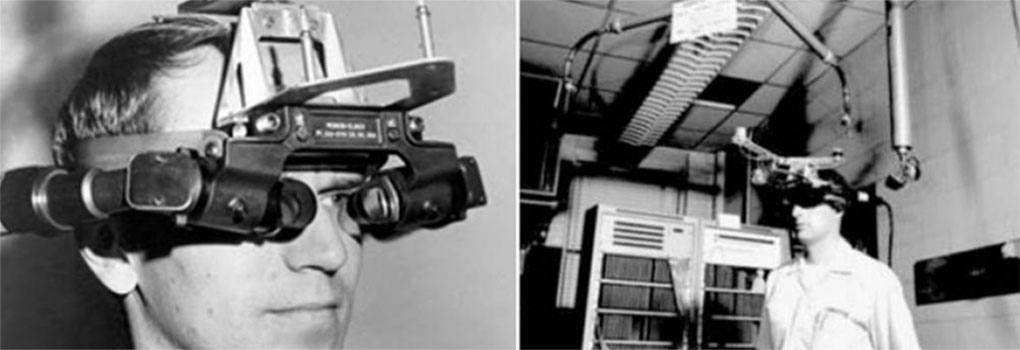History of VR - Timeline of Events and Tech Development
Updated June 14, 2023 - Dom Barnard
In 1935 Stanley Weinbaum released Pygmalion's Spectacles - a science fiction story. The story's main character wears a pair of goggles which transports him to a fictional world which stimulates his senses aptly and features holographic recordings. Some consider it to be the origin of the virtual reality (VR) concept as this story was a good prediction of the aims and achievements of the future.
However the first VR technical developments were in the 1830s, so this is where our timeline starts:
1838
Sir Charles Wheatstone was the first to describe stereopsis in 1838 and was awarded the Royal Medal of the Royal Society in 1840 for his explanation of binocular vision, a research which led him to construct the stereoscope.
The research demonstrated that the brain combines two photographs (one eye viewing each) of the same object taken from different points to make the image appear to have a sense of depth and immersion (3-dimensional).
This technology enabled Wheatstone to create the earliest type of stereoscope. It used a pair of mirrors at 45 degree angles to the user's eyes, each reflecting a picture located off to the side.
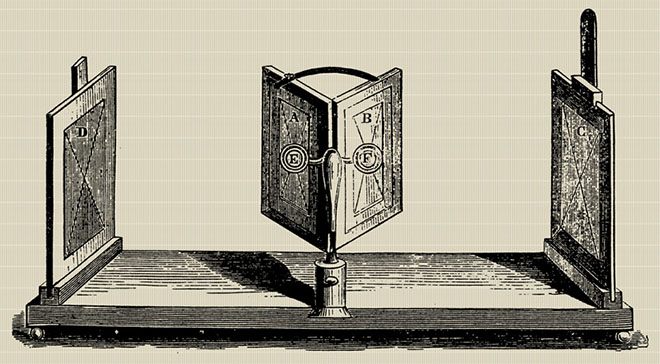
The Wheatstone mirror stereoscope.
1935
In 1935 American science fiction writer Stanley Weinbaum presented a fictional model for VR in his short story Pygmalion's Spectacles. In the story, the main character meets a professor who invented a pair of goggles which enabled "a movie that gives one sight and sound [...] taste, smell, and touch. [...] You are in the story, you speak to the shadows (characters) and they reply [...] the story is all about you, and you are in it."
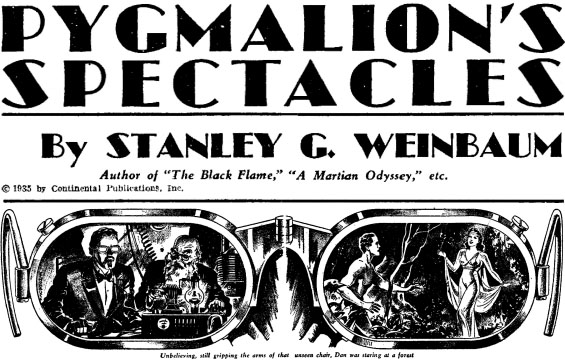
Pygmalion's Spectacles short story.
1956
Cinematographer Morton Heilig created Sensorama, the first VR machine (patented in 1962). It was a large booth that could fit up to four people at a time. It combined multiple technologies to stimulate all of the senses: there was a combined full colour 3D video, audio, vibrations, smell and atmospheric effects, such as wind.
This was done using scent producers, a vibrating chair, stereo speakers and a stereoscopic 3D screen. Heilig thought that the Sensorama was the "cinema of the future" and he wanted to fully immerse people in their films. Six short films were developed for it.
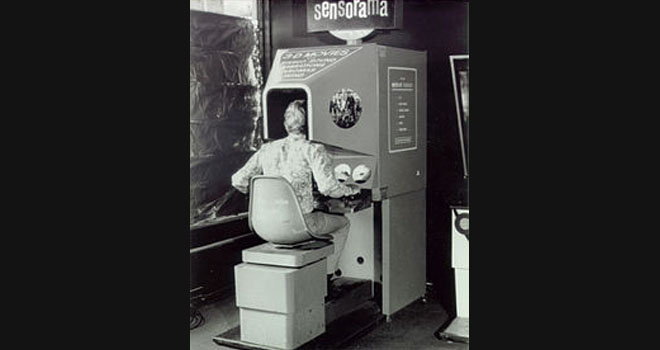
The Sensorama VR machine.
1960
Heilig also patented the Telesphere Mask which was the first head-mounted display (HMD). This provided stereoscopic 3D images with wide vision and stereo sound. There was no motion tracking in the headset at this point.
1961
Until Headsight was created by Comeau and Bryan, two Philco Corporation engineers. Headsight was the first motion tracking HMD. It had built-in video screens for each eye and a head-tracking system.
However, this wasn't used for virtual reality; it was developed for the military to allow them to remotely look at hazardous situations. A remote camera imitated the head movements so the user could look around the setting.
1965
Ivan Sutherland, a computer scientist, presented his vision of the Ultimate Display. The concept was of a virtual world viewed through an HMD which replicated reality so well that the user would not be able to differentiate from actual reality. This included the user being able to interact with objects. This concept featured computer hardware to form the virtual world and to keep it functioning in real-time. His paper is seen as the fundamental blueprint for VR.
“The ultimate display would, of course, be a room within which the computer can control the existence of matter. A chair displayed in such a room would be good enough to sit in. Handcuffs displayed in such a room would be confining, and a bullet displayed in such a room would be fatal. With appropriate programming such a display could literally be the Wonderland into which Alice walked.”
1966
Thomas Furness, a military engineer, created the first flight simulator for the Air Force. This assisted in the progression of VR because the military subsequently provided a lot of funding for producing better flight simulators.
1968
Sutherland, with his student Bob Sproull, created the first virtual reality HMD, named The Sword of Damocles. This head-mount connected to a computer rather than a camera and was quite primitive as it could only show simple virtual wire-frame shapes.
These 3D models changed perspective when the user moved their head due to the tracking system. It was never developed beyond a lab project because it was too heavy for users to comfortably wear; they had to be strapped in because it was suspended from the ceiling.
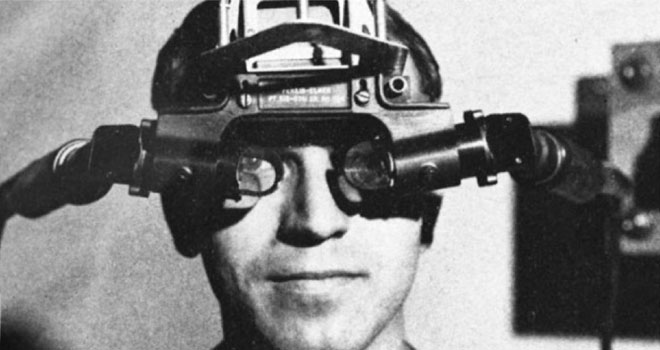
1969
Myron Krueger, a computer artist, developed a succession of "artificial reality" experiences using computers and video systems. He created computer-generated environments that responded to the people in it. These projects led to VIDEOPLACE technology which is mentioned later.
1972
General Electric Corporation built a computerised flight simulator which featured a 180-degree field of vision by using three screens surrounding the cockpit.
1975
Krueger's VIDEOPLACE, the first interactive VR platform, was displayed at the Milwaukee Art Center. It used computer graphics, projectors, video cameras, video displays and position-sensing technology and it didn't use goggles or gloves. VIDEOPLACE consisted of dark rooms with large video screens to surround the user in "VR".

The users could see their computer-generated silhouettes imitating their own movements and actions - the users' movements were recorded on camera and transferred onto the silhouette. Also, users in different rooms could interact with other users' silhouettes in the same virtual world. This encouraged the idea that people could communicate within a virtual world even if they weren't physically close.
1977
Aspen Movie Map was created by MIT. This program enabled users to virtually wander through Aspen city in Colorado, like with Google Street View. There were three modes: summer, winter and polygons.
It was created using photographs from a car driving through the city. There were no HMDs but it was the use of first-person interactivity and it suggested that VR could transport people to other places.
1979
McDonnell-Douglas Corporation integrated VR into its HMD, the VITAL helmet, for military use. A head tracker in the HMD followed the pilot's eye movements to match computer-generated images.
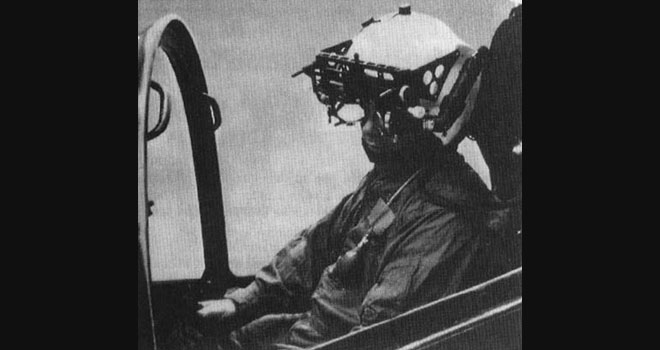
1980
StereoGraphics company created stereo vision glasses.
1982
Sayre gloves were created by Sandin and Defanti. These gloves were the first wired gloves. They monitored hand movements by using light emitters and photocells in the gloves' fingers. So, when the user moved their fingers the amount of light hitting the photocell varied which then converted the finger movements into electrical signals. This may have been the beginning of gesture recognition.
Furness created a working model of a virtual flight simulator, for the military, called the Visually Coupled Airborne Systems Simulator (VCASS).
1985
Jaron Lanier and Thomas Zimmerman founded VPL Research, Inc. This company is known as the first company to sell VR goggles and gloves. They developed a range of VR equipment, such as, the DataGlove, EyePhone HMD and the Audio Sphere.
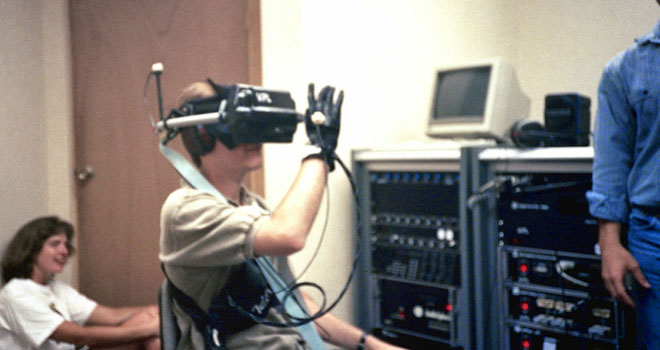
VPL Research developed a range of VR equipment.
1986
Furness developed a flight simulator between 1986-1989 known as the Super Cockpit. The training cockpit featured: computer-generated 3D maps, advanced infrared and radar imagery and the pilot could see and hear in real-time.
The helmet's tracking system and sensors allowed the pilot to control the aircraft using gestures, speech and eye movements. Read more about Thomas Furness.
1987
British Aerospace used the HMD similarly to Furness' Super Cockpit and developed the Virtual Cockpit which also featured speech recognition.
Jaron Lanier popularised the term "Virtual Reality" while at VPL Research. The VR and graphics-related patents were later bought by Sun Microsystems.
The company Dimension International created a software that could build 3D worlds in a PC.
1989
Scott Foster founded Crystal River Engineering Inc after receiving a contract from NASA to develop the audio element of the Virtual Environment Workstation Project (VIEW) - a VR training simulator for astronauts. Through this company real-time binaural 3D audio processing was developed.
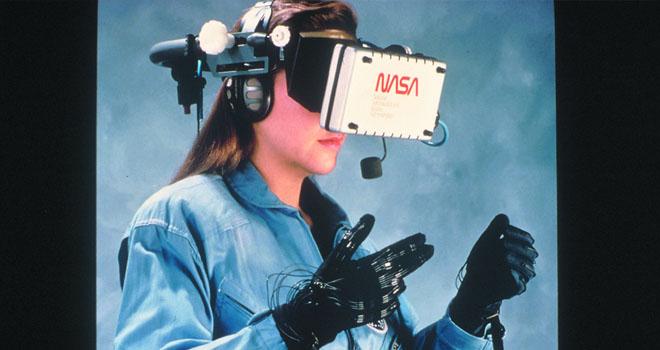
Mattel, Inc released the Power Glove, based on VPL's DataGlove. The Power Glove was a controller accessory for the Nintendo Entertainment System, but it never took off as it was difficult to use.
1990
Jonathan Waldern exhibited Virtuality, a VR arcade machine, at the Computer Graphics 90 exhibition in London.
1991
Antonio Medina, a NASA scientist, designed a VR system to drive the Mars robot rovers from Earth in supposed real-time despite signal delays between the planets. This system is called "Computer Simulated Teleoperation".
The Virtuality Group launched Virtuality. These were VR arcade machines where gamers could play in a 3D gaming world. This was the first mass-produced VR entertainment system.
A Virtuality pod featured VR headsets and real-time immersive stereoscopic 3D images. Some of the machines could be networked together for multi-player games. Eventually some of the very popular arcade games, like Pac-Man, had VR versions.
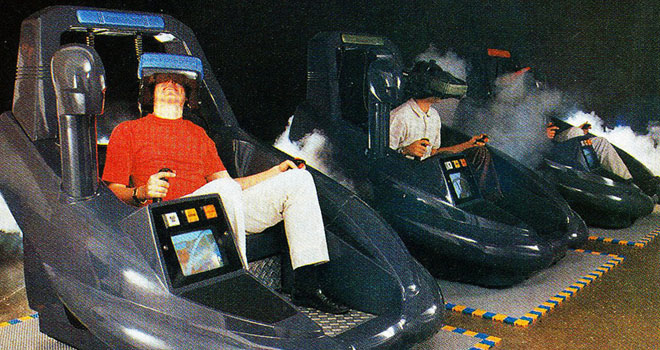
SEGA announced that they were working on the SEGA VR headset which would be available for the general public to purchase. This headset was meant to be used for arcade games and the Mega Drive console. It had a visor-like look due to the influence of popular films, such as, RoboCop. LCD displays were placed in the visor, as well as stereo headphones and sensors for tracking head movement.
However, it was never released even though four games were made for it. One of the explanations for the termination was SEGA's concern of people injuring themselves as the VR effect was too realistic. However, this seems unlikely due to the limited processing power.
1994
SEGA released SEGA VR-1, a motion simulator arcade machine.
VictorMaxx released a VR headset called CyberMaxx.
1995
Nintendo launched the Virtual Boy console which played 3D monochrome video games. It was the first portable console to display 3D graphics. But it was a commercial failure due to:
- The lack of colour graphics
- The lack of software support
- It wasn't comfortable to use
One year later it was discontinued.
Affordable home VR headsets were released:
- Virtual IO released the I-Glasses.
- VFX1 Headgear was released by Forte.
1997
Georgia Tech and Emory University researchers used VR to create war zone scenarios for veterans receiving exposure therapy for PTSD. This was known-as Virtual Vietnam [link 1][link 2].
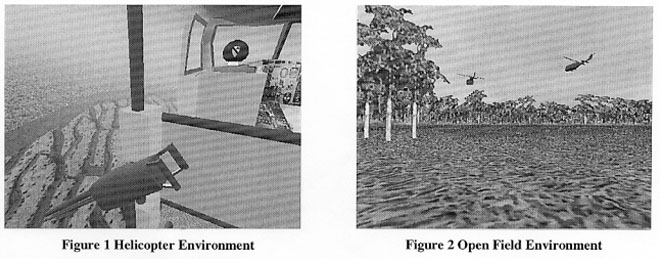
2001
SAS Cube was the first PC based cubic room. It led to Virtools VR Pack.
2007
Google introduced Street View.
Immersive Media was identified as the contractor that captured the imagery for four of the five cities initially mapped by Street View, using its patented dodecahedral camera array on a moving car.
2010
Google introduced a stereoscopic 3D mode for Street View.
Palmer Luckey, an 18-year-old entrepreneur, created the first prototype of the Oculus Rift headset. It featured a 90-degree field of vision, which had never been seen before, and relied on a computer's processing power to deliver the images. This new development boosted and refreshed interest in VR.
2012
Luckey launched a Kickstarter campaign for the Oculus Rift which raised $2.4 million.
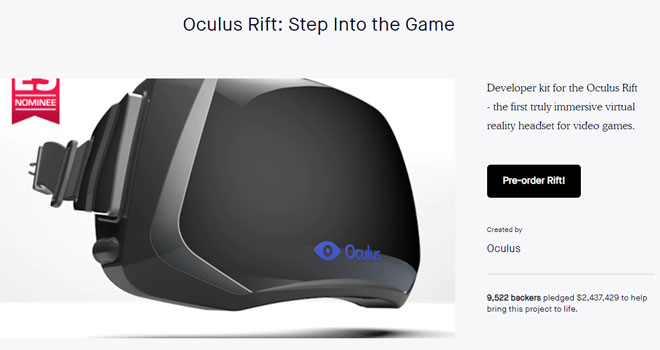
2014
Facebook bought the Oculus VR company for $2 billion. This was a defining moment in VR's history because VR gained momentum rapidly after this.
Sony announced that they were working on Project Morpheus, a VR headset for the PlayStation 4 (PS4).
Google released the Cardboard - a low-cost and do-it-yourself stereoscopic viewer for smartphones.
Samsung announced the Samsung Gear VR, a headset that uses a Samsung Galaxy smartphone as a viewer.
More people started exploring the possibilities of VR, including adding innovative accessories, for example Cratesmith, an independent developer, recreated a hoverboard scene from Back to the Future by pairing the Oculus Rift with a Wii's balance board.
2015
VR possibilities started becoming widely available to the general public, for example:
- The Wall Street Journal launched a VR roller coaster that followed the ups and downs of the Nasdaq Stock Market.
- The BBC created a 360-degree video where users view a Syrian migrant camp.
- The Washington Post released a VR experience of the Oval Office at the White House Correspondents’ Association Dinner.
- RYOT, a media company, exhibited Confinement, a short VR film about solitary confinement in US prisons.
- Etc.
Gloveone was successful in its Kickstarter campaign. These gloves let users feel and interact with virtual objects.
2016
By 2016 hundreds of companies were developing VR products.
Most of the headsets had dynamic binaural audio.
Haptic interfaces were underdeveloped. Haptic interfaces are systems that allow humans to interact with a computer using their touch and movements - like the Gloveone gloves that were being developed. This meant that handsets were typically button-operated.
HTC released its HTC VIVE SteamVR headset. This was the first commercial release of a headset with sensor-based tracking which allowed users to move freely in a space.
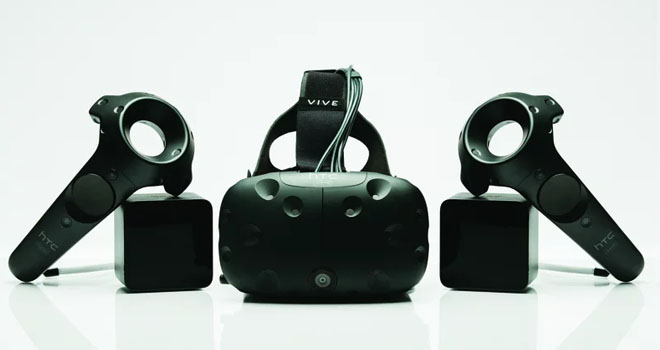
2017
Many companies are developing their own VR headsets, including HTC, Google, Apple, Amazon, Microsoft Sony, Samsung etc.
Sony may be developing a similar location tracking tech to HTC's VIVE for the PlayStation 4.
2018
At Facebook F8, Oculus demonstrated a new headset prototype, the Half Dome. This is a varifocal headset with a 140 degrees field of vision.
Virtual reality has significantly progressed and is now being used in a variety of ways, from providing immersive gaming experiences, to helping treat psychological disorders, to teaching new skills and even taking terminally ill people on virtual journeys. VR has many applications and with the rise in smartphone technology VR will be even more accessible.
- See other applications of VR
2019
Forbes describes this as The Year Virtual Reality Gets Real. Oculus Quest, Facebook's standalone headset, created a lot of interest and momentum, selling out in many locations and generating $5 million worth of content sales.
The shift from tethered to standalone VR headsets represented a shift within the immersive ecosystem, as standalone headsets are much easier to use for the average consumer.
Road to VR reported that the monthly-connected VR headsets on Steam had surpassed 1 million for the first time.
Nintendo entered the VR market with the Labo: VR kit for Nintendo Switch on April 12.
In March, Beat Saber became the first application to sell over 1 million copies in under a year.
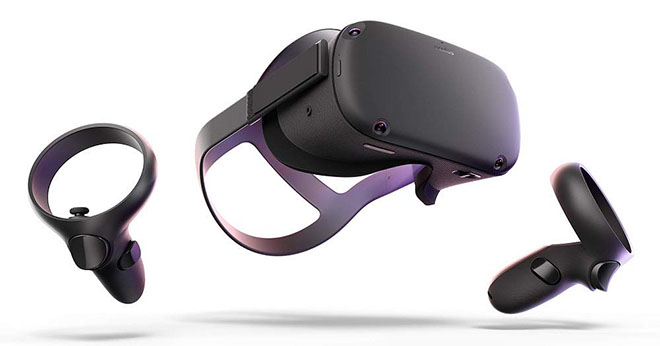
2020
The Oculus Quest 2 was unveiled on September 16, 2020, during the Facebook Connect 7 event.
The Quest 2 received mostly positive reviews as an incremental update to the Quest and continues to sell in the millions around the world.
2021
Pico launches the Pico Neo 3 headset, a competitor to the Oculus Quest 2 headset.
The Chinese company ByteDance, which owns TikTok, acquired Pico in a push to diversify its business.
Facebook (now Meta) plans to spend at least $10 billion this year on Facebook Reality Labs, its metaverse division tasked with creating AR and VR hardware, software, and content.
2023
Apple announced its entry into the VR market with the Apple Vision Pro, an upcoming mixed-reality headset announced on June 5, 2023, at its 2023 Worldwide Developers Conference (WWDC). The headset will sell for $3,499.

Meta announced the Meta Quest 3 on June 1, 2023. The headset will sell for $499.
